Technologies
Why You Won’t Be Buying a Rollable Phone Anytime Soon
Shapeshifting concepts from Motorola and Samsung likely won’t turn into real products for quite some time.
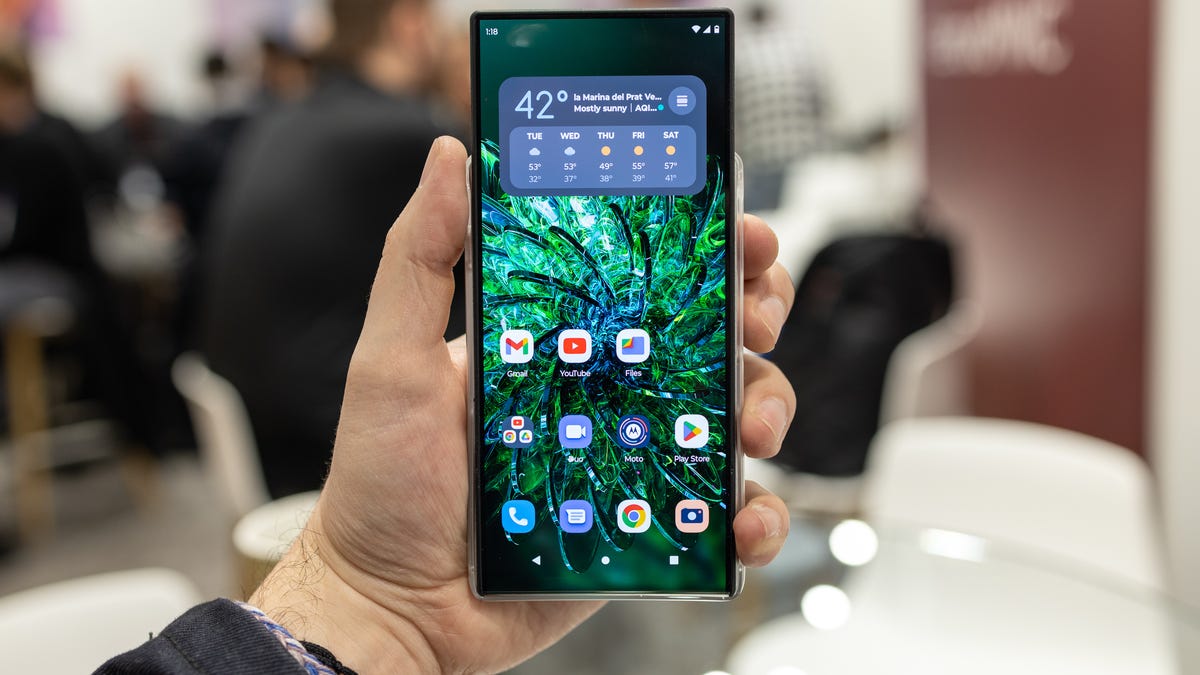
Imagine if your phone or tablet could change the size of its screen depending on what you’re doing? That’s the future Motorola and Samsung envision, as both companies showcased concept devices capable of extending or shrinking their displays with the press of a button.
Motorola flaunted its concept at Mobile World Congress this week, while Samsung exhibited a slew of shapeshifting prototypes at CES in January. Such concepts prove phone makers are thinking about the next evolution of personal devices beyond today’s static touchscreens. They’re even looking beyond foldable phones, which have only been widely available for a little more than three years.
But as eye-catching as these concepts are, it’ll likely be a long time before you’re carrying one around. High prices, engineering and durability challenges and a lack of compelling use cases will likely mean these concepts won’t turn into real products anytime soon. And if they do, there are still good reasons why you should wait before buying one.
Rollable phones are eye-catching


Motorola’s rollable phone in small (left) and large form (right).
Andrew Lanxon/CNETConceptual devices with expandable screens have surfaced before, but they’ve garnered attention again this week at Mobile World Congress thanks to Motorola and its parent company Lenovo.
Motorola showcased its prototype palm-sized phone that extends with the double press of a button. And even better, the screen automatically unfurls when using certain apps like YouTube, according to my colleague Andrew Lanxon, who got to see the device at the conference. The phone may also switch between small and large mode depending on what you’re doing within an app. For example, the phone may stay tiny when you’re scrolling through your inbox, but it could automatically expand as you compose an email, Lanxon writes.
When the device is in its compact form, the display wraps around the bottom of the device to provide a secondary screen on the back of the phone. I can’t think of many other reasons to use this extra screen other than as a viewfinder for taking selfies with the rear camera, as Lanxon did during his demo. Regardless, it’s intriguing to see how Motorola is thinking about putting that technology to use.
Take a look at the phone in action.
Andrew Lanxon/CNETEven though phones with rollable screens are in their infancy, they could present some notable advantages over today’s foldables, according to Ross Young, CEO and co-founder of Display Supply Chain Consultants. The crease may be smaller since it would be located at the edge of the device rather than in the center, he said via email. Rollable phones will also likely be thinner than current devices like the Galaxy Z Fold 4, which resembles two phones stacked on top of one another when folded.
But those benefits will probably result in additional engineering challenges. The motors and sliding mechanisms likely require more power consumption, says Young.
«Some brands told us there is a lot of work still to be done,» he said.
It’s not the first time Motorola has shown a concept like this; the phone maker also showcased the tech at Lenovo’s Tech World conference last year. But its arrival at MWC underscores Motorola’s ambitions in this area.
Motorola isn’t the only company interested in making phones with screens that can roll, slide and expand. Nearly two months ago, Samsung exhibited its own vision for what futuristic phones and tablets could look like. The star of the show was the Flex Hybrid concept, which looks like a notebook when closed but can switch between 10.5-inch and 12.4-inch screen sizes when opened.
Samsung showcased its display concepts at CES 2023.
David Katzmaier/CNETLG also made a splash with the rollable phone concept it teased at CES 2021, although the company shut down its mobile phone business shortly thereafter. Chinese tech giant Oppo has developed a rollable phone concept with a 6.7-inch screen that transforms into a 7.4-inch tablet-sized display.
At the same time, foldable phones — which are generally considered to be the precursor for future rollable devices — still only account for a sliver of the overall smartphone market. Foldable phones are estimated to have accounted for just 1.1% of smartphone shipments in 2022 and are expected to make up 2.8% in 2026, according to International Data Corporation. But that hasn’t stopped phone makers from looking ahead.
«They’ve got to keep innovating to differentiate,» said Brad Akyuz, executive director and mobile analyst at NPD Group. «That’s the only way they can just get ahead of the competition.»
But don’t count on buying one anytime soon
The word «concept» is crucial; these devices aren’t products. Instead, they’re proofs of concept meant to illustrate the direction these companies may take when developing future smartphones. That means we don’t know when rollable phones from Motorola, Samsung or other device makers will launch, if ever.
The foldable phone market could serve as a blueprint. Samsung demonstrated flexible display technology as far back as 2013, but it didn’t release its first phone that could fold in half until 2019.
Whether a rollable phone arrives in the near term or not, analysts believe it’ll take several years for the devices to become a regular fixture in the tech world. Akyuz pegs that at around three to four years, while Bill Menezes, a director for market researcher Gartner covering the telecoms industry, estimates three to six years.
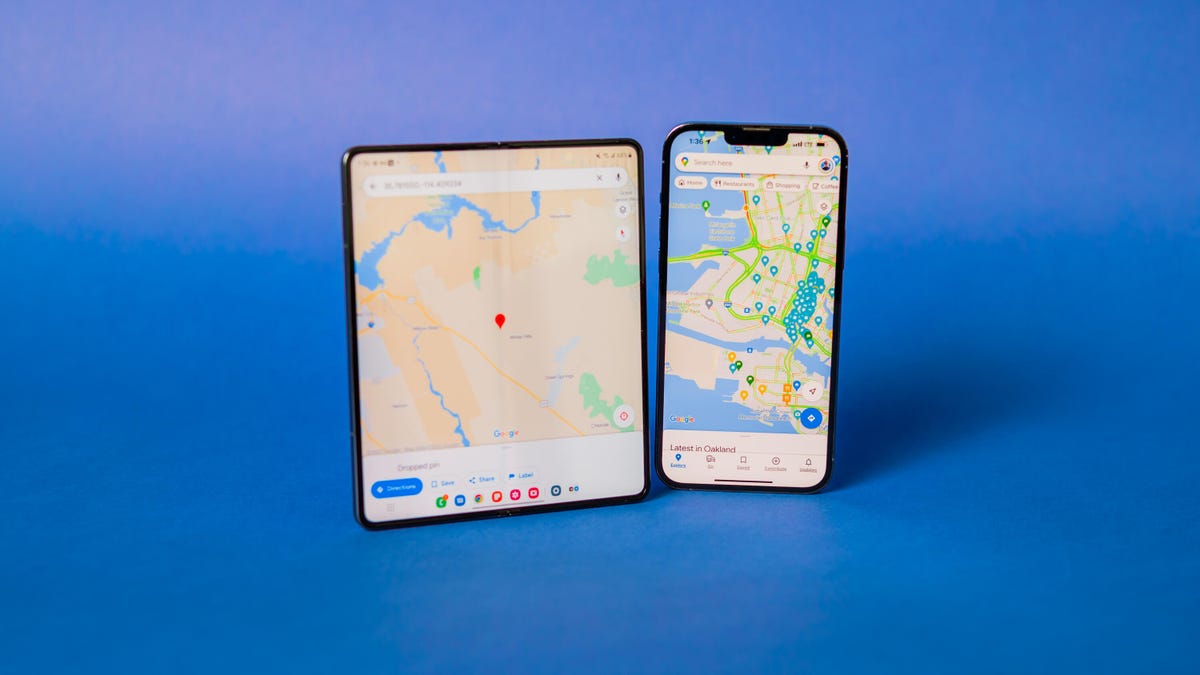

Samsung’s Galaxy Z Fold 4 (left) alongside an iPhone (right)
James Martin/CNETThere are a variety of reasons why, all of which mirror the challenges that the foldable phone industry is going through. Prices need to be affordable, and phones must be durable enough to withstand everyday use without concern.
They should also offer compelling features that significantly improve the way you use your mobile device to make them worthwhile. Even though today’s foldables have different designs that make our phones more compact when closed, the overall experience is the same as that of using a standard phone. Samsung is trying to address this with a feature called Flex Mode, which divides compatible apps across the top and bottom portions of the display when folded halfway. But this feels more like an optimization than a brand new way to use your phone.
«A foldable phone really isn’t that much different than a flat phone concept,» said Menezes. «Once you open it, you’re still scrolling through to get to different applications, or different screens or tabs.»
Even if a company like Motorola or Samsung does release a rollable phone in the near future, you probably shouldn’t buy it. First-generation products can be expensive, damage-prone and not as polished as later iterations.
Take the Galaxy Fold from 2019, for example, which Samsung postponed launching after a small number of reviewers reported issues with the display. That phone was also priced at $1,980, while the much-improved Galaxy Z Fold 4, which just launched in August, starts at $1,800. Samsung’s smaller foldable, the Galaxy Z Flip, has also matured; the first version had a tiny screen that barely felt useful and lacked 5G.
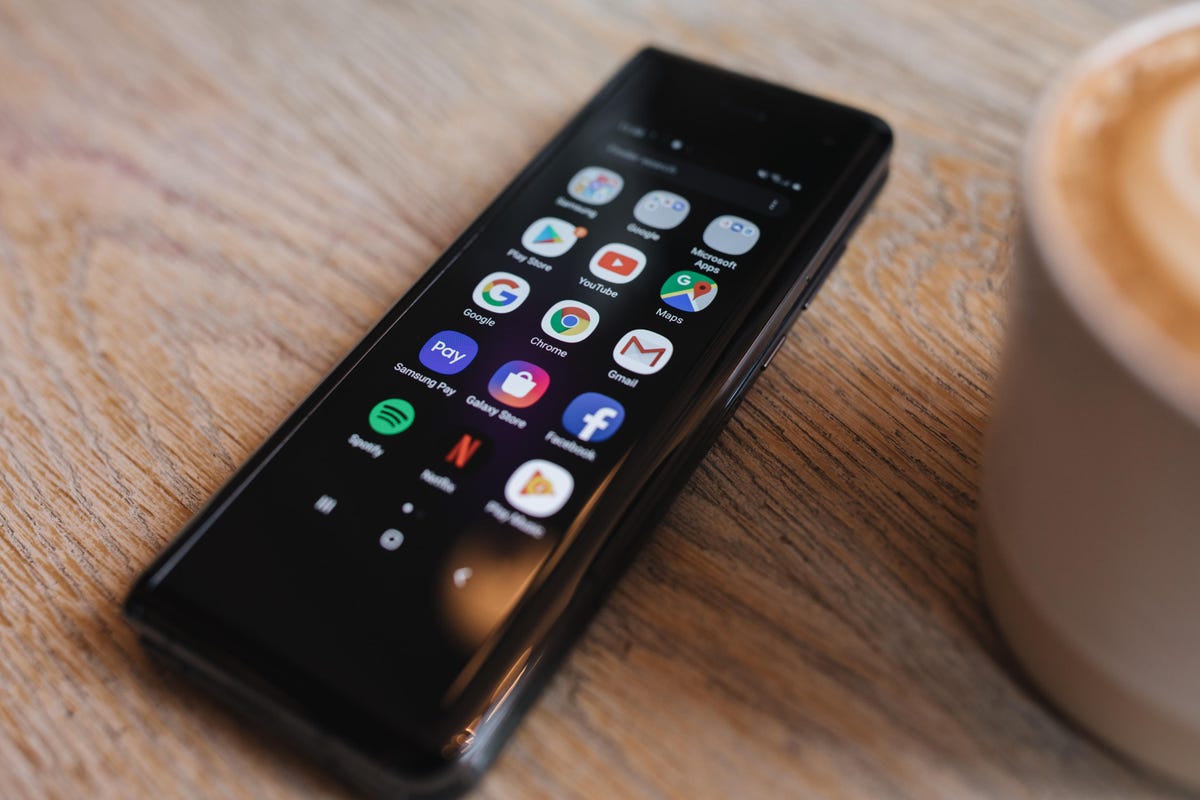

Samsung’s 2019 Galaxy Fold
Andrew Hoyle/CNETNow, more than three years after the Galaxy Fold’s launch, demand for foldable devices is starting to accelerate. Even though IDC’s report suggests foldables only account for a fraction of the smartphone market, shipments are estimated to have grown by 66.6% in 2022 compared to 2021. NPD Group’s Connected Intelligence Mobility Survey also suggests interest is growing. While 51% of survey respondents said they were not likely at all to buy a foldable phone in 2019, only 36% said the same in 2022, according to data from the survey shared with CNET.
«I think this is the future, I don’t think we can deny that,» Akyuz said. «But as we’ve seen with the foldable category, it’s just going to take some time to get there.»
Technologies
Today’s Wordle Hints, Answer and Help for Nov. 4, #1599
Here are hints and the answer for today’s Wordle for Nov. 4, No. 1,599.
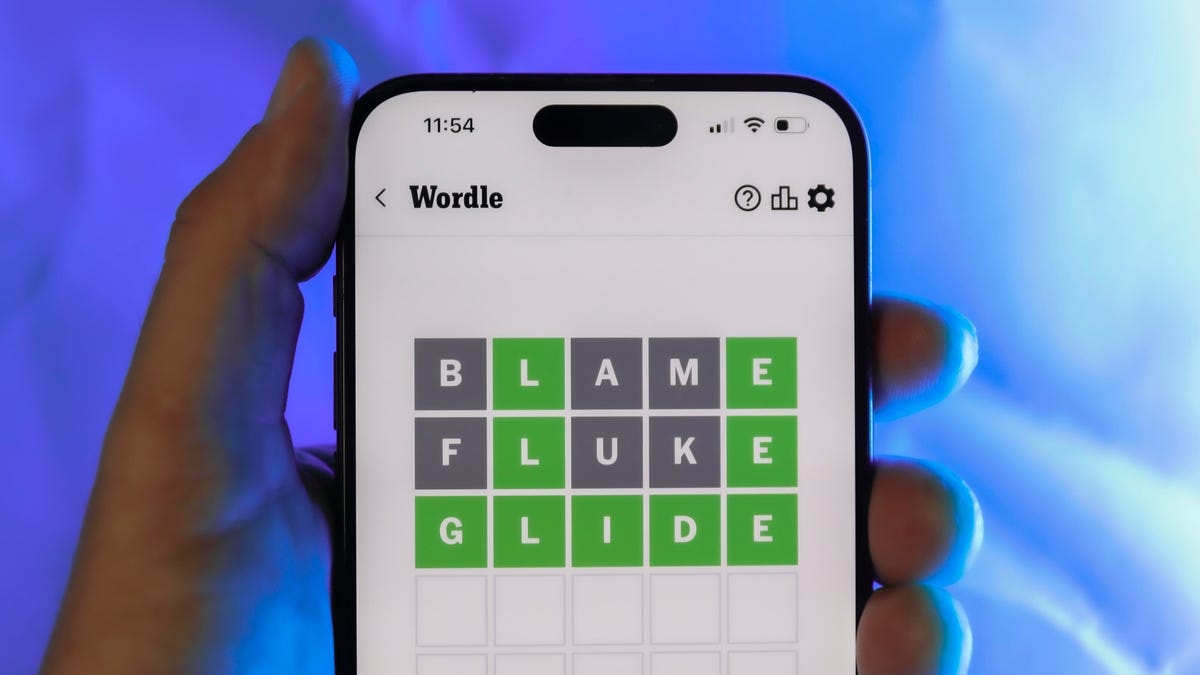
Looking for the most recent Wordle answer? Click here for today’s Wordle hints, as well as our daily answers and hints for The New York Times Mini Crossword, Connections, Connections: Sports Edition and Strands puzzles.
Today’s Wordle puzzle begins with one of the least-used letters in the alphabet. (Check our full list ranking the letters by popularity.) If you need a new starter word, check out our list of which letters show up the most in English words. If you need hints and the answer, read on.
Today’s Wordle hints
Before we show you today’s Wordle answer, we’ll give you some hints. If you don’t want a spoiler, look away now.
Wordle hint No. 1: Repeats
Today’s Wordle answer has one repeated letter.
Wordle hint No. 2: Vowels
Today’s Wordle answer has two vowels, but one is the repeated letter, so you’ll see that one twice.
Wordle hint No. 3: First letter
Today’s Wordle answer begins with V.
Wordle hint No. 4: Last letter
Today’s Wordle answer ends with E.
Wordle hint No. 5: Meaning
Today’s Wordle answer can refer to the place where something happens, especially an organized event such as a concert, conference, or sports event.
TODAY’S WORDLE ANSWER
Today’s Wordle answer is VENUE.
Yesterday’s Wordle answer
Yesterday’s Wordle answer, Nov. 3, No. 1598 was AWOKE.
Recent Wordle answers
Oct. 30, No. 1594: LATHE
Oct. 31, No. 1595: ABHOR
Nov. 1, No. 1596: MOTEL
Nov. 2, No. 1597: RABID
Technologies
Why You Should Consider a Burner Phone for Your Holiday Travel This Year
If you’re traveling internationally, carrying a simple phone that doesn’t store personal information can be a smart move when entering the US.
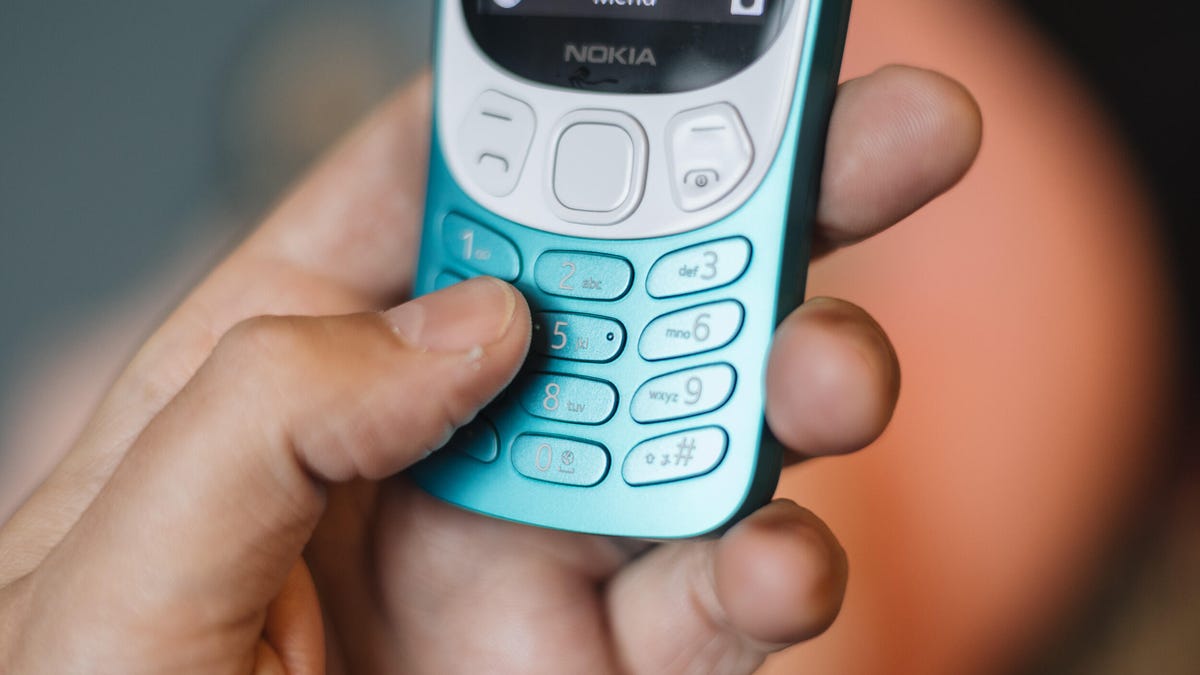
Travel is challenging enough, and this year adds a new hurdle. US border agents are stepping up searches of travelers entering the country — even US citizens returning from overseas — and that extends to their personal devices. These searches can go beyond a quick look, giving agents the authority to copy or analyze a phone’s contents.
According to new figures from US Customs and Border Protection, nearly 15,000 device searches were carried out between April and June, with over 1,000 of them using advanced tools that copy or analyze what’s on a phone. The rising numbers raise questions about how much personal data travelers may be handing over without realizing it.
So what’s the solution? A burner phone. It’s the ultimate defense for keeping your personal data private when you travel, ensuring you stay connected without handing over your entire digital life at the border.
But the appeal goes beyond privacy. A stripped-down phone is also the perfect escape from the constant notifications and screen-time vortex of your primary device. Even celebrities such as Conan O’Brien have embraced simpler phones to cut through the noise. Whether you’re crossing a border or just trying to cross the street without distractions, a burner might be the smartest tech you own.
Read more: Best Prepaid Phone of 2025
Although carriers have offered prepaid phones since the ’90s, «burner phones» or «burners» became popular in the 2000s following the celebrated HBO series The Wire, where they helped characters avoid getting caught by the police. Although often portrayed in that light, burners aren’t only used by criminals; they’re also used anyone concerned with surveillance or privacy infringement.
What is a burner phone, and how does it work? Here’s everything you need to know about burners and how to get one.
Don’t miss any of our unbiased tech content and lab-based reviews. Add CNET as a preferred Google source.
What is a burner phone?
A burner phone is a cheap prepaid phone with no commitments. It comes with a set number of prepaid call minutes, text messages or data, and it’s designed to be disposed of after use.
Burners are contract-free, and you can grab them off the counter. They’re called burner phones because you can «burn» them (trash them) after use, and the phone can’t be traced back to you, which makes them appealing to criminals. Burner phones are typically used when you need a phone quickly, without intentions of long-term use.
Burners are different from getting a regular, contract-bound cellphone plan that requires your information to be on file.
Why should you use a burner phone?
Burner phones are an easy way to avoid cellphone contracts or spam that you get on your primary phone number. Burners aren’t linked to your identity, so you can avoid being tracked down or contacted.
You don’t have to dispose of a burner phone after use. You can add more minutes and continue using it. Burner phones can still function as regular phones, minus the hassle of a contract.
You can also get a burner phone as a secondary phone for a specific purpose, like having a spare phone number for two-factor authentication texts, for business, or to avoid roaming charges while traveling. Burner phones are often used by anyone concerned with privacy.
Read more: The Data Privacy Tips Digital Security Experts Wish You Knew
Burner phones, prepaid phones, smartphones and burner SIMs: What’s the difference?
Burner phones are cheap phones with simple designs that lack the bells and whistles of a smartphone. Because they’re designed to be disposable, you only get the essentials, as seen by the most common version, the flip phone.
All burner phones are prepaid phones, but not all prepaid phones are burners. What sets a burner apart is that you won’t have to give away any personal information to get one, and it won’t be traceable back to you. Again, a burner phone is cheap enough to be destroyed after use.
Prepaid smartphones are generally low-end models. You can use any unlocked smartphone with prepaid SIM cards, essentially making it a prepaid phone.
If you want a burner, you don’t necessarily have to buy a new phone. You can get a burner SIM and use it with an existing phone. Burner SIMs are prepaid SIMs you can get without a contract or giving away personal information.
Where can you buy a burner phone?
Burner phones are available at all major retail outlets, including Best Buy, Target and Walmart. They’re also often available at convenience stores like 7-Eleven, local supermarkets, gas stations and retail phone outlets like Cricket and Metro.
You can get a burner phone with cash, and it should cost between $10 and $50, although it may cost more if you get more minutes and data. If you’re getting a burner phone specifically to avoid having the phone traced back to you, it makes sense to pay with cash instead of a credit card.
If you just want a prepaid secondary phone, you can use a credit card. Just keep in mind that credit cards leave a trail that leads back to you.
There are also many apps that let you get secondary phone numbers, including Google Fi and the Burner app. However, these aren’t burners necessarily because the providers typically have at least some of your personal information.
If you’re just looking to get a solid prepaid phone without anonymity, check out our full guide for the best prepaid phone plans available. We also have a guide for the best cheap phone plans.
Technologies
Chrome Autofill Now Supports Passport, Driver’s License and Vehicle Info
Soon, you’ll never need to remember anything ever again.
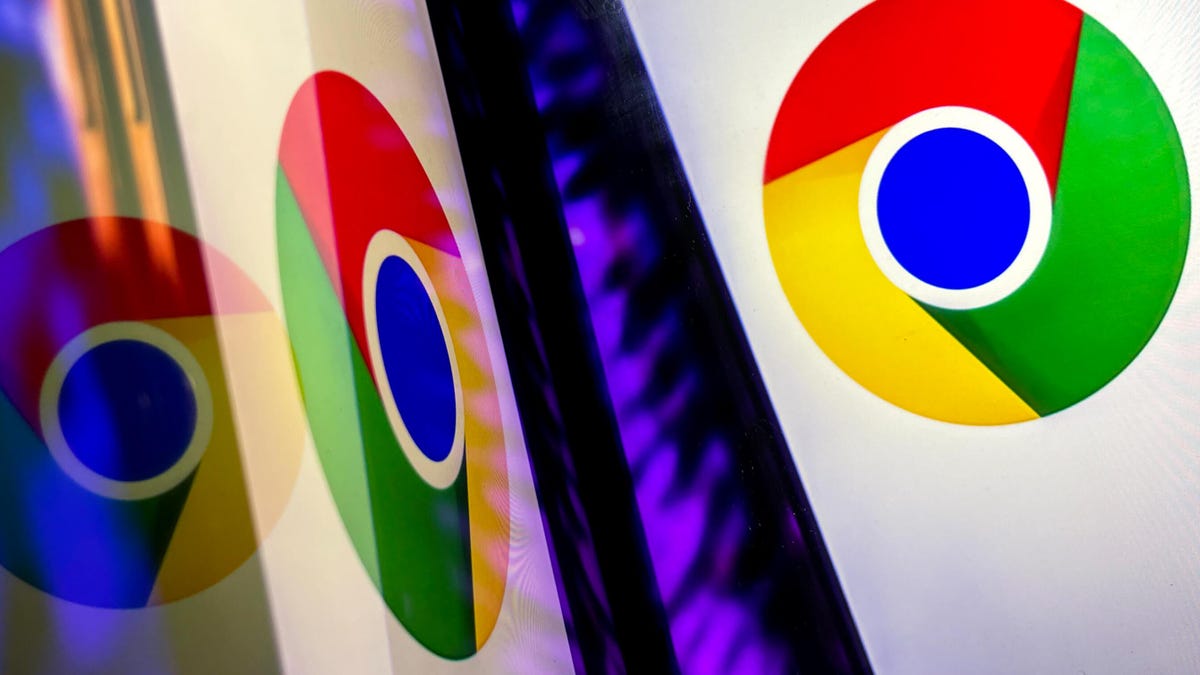
Computer users are accustomed to web browsers autofilling everything from names and addresses to credit card numbers. Now, Google Chrome is adding new enhanced autofill options that allow users to automatically populate fields for passports, driver’s licenses, and their vehicle’s license plate or VIN, Google said in a blog post on Monday.
Desktop users must choose to turn on the feature, which is called enhanced autofill. Otherwise, it stays off. To turn it on, open Chrome, and at the top right of your browser, select more, then settings, then autofill and passwords. Finally, choose enhanced autofill and turn it in.
Google says Chrome now can «better understand complex forms and varied formatting requirements, improving accuracy across the web.» The company also says that enhanced autofill will be «private and secure.»
This enhanced autofill update is available in all languages, and more data options will be supported in the coming months.
A representative for Google said the company had no additional comment.
Don’t miss any of our unbiased tech content and lab-based reviews. Add CNET as a preferred Google source.
Chrome is a critical component in Google’s business. The web browser, currently the most popular in the world with a 73% market share, according to GlobalStats, provides the company with valuable user data that it uses to sell advertising. Advertising is how Google makes the majority of its revenues. New features help keep users loyal to Chrome, making it more difficult for them to switch to other browsers, including those from companies like Perplexity and OpenAI.
-

 Technologies3 года ago
Technologies3 года agoTech Companies Need to Be Held Accountable for Security, Experts Say
-

 Technologies3 года ago
Technologies3 года agoBest Handheld Game Console in 2023
-

 Technologies3 года ago
Technologies3 года agoTighten Up Your VR Game With the Best Head Straps for Quest 2
-

 Technologies4 года ago
Technologies4 года agoVerum, Wickr and Threema: next generation secured messengers
-

 Technologies4 года ago
Technologies4 года agoBlack Friday 2021: The best deals on TVs, headphones, kitchenware, and more
-

 Technologies4 года ago
Technologies4 года agoGoogle to require vaccinations as Silicon Valley rethinks return-to-office policies
-

 Technologies4 года ago
Technologies4 года agoOlivia Harlan Dekker for Verum Messenger
-

 Technologies4 года ago
Technologies4 года agoiPhone 13 event: How to watch Apple’s big announcement tomorrow
